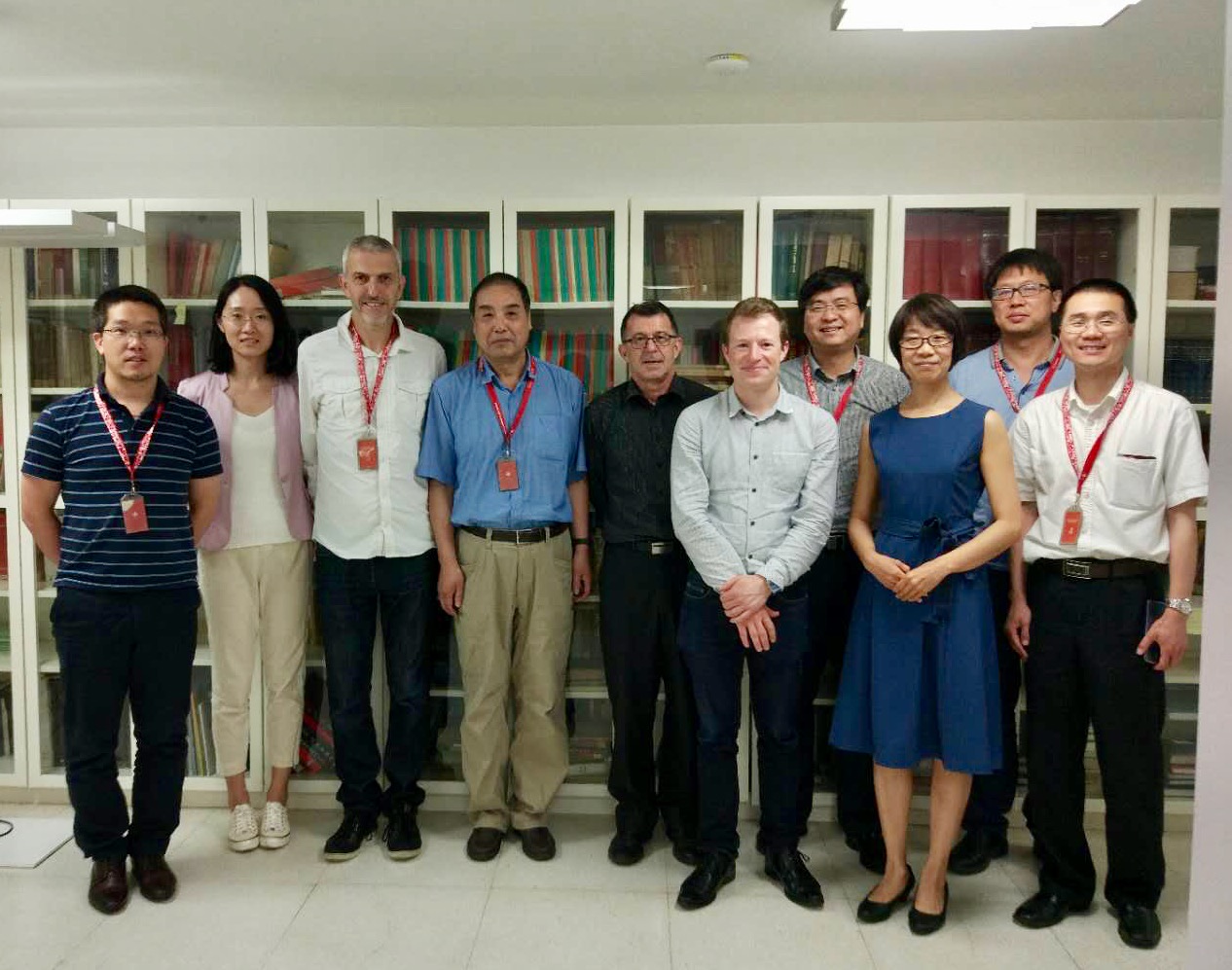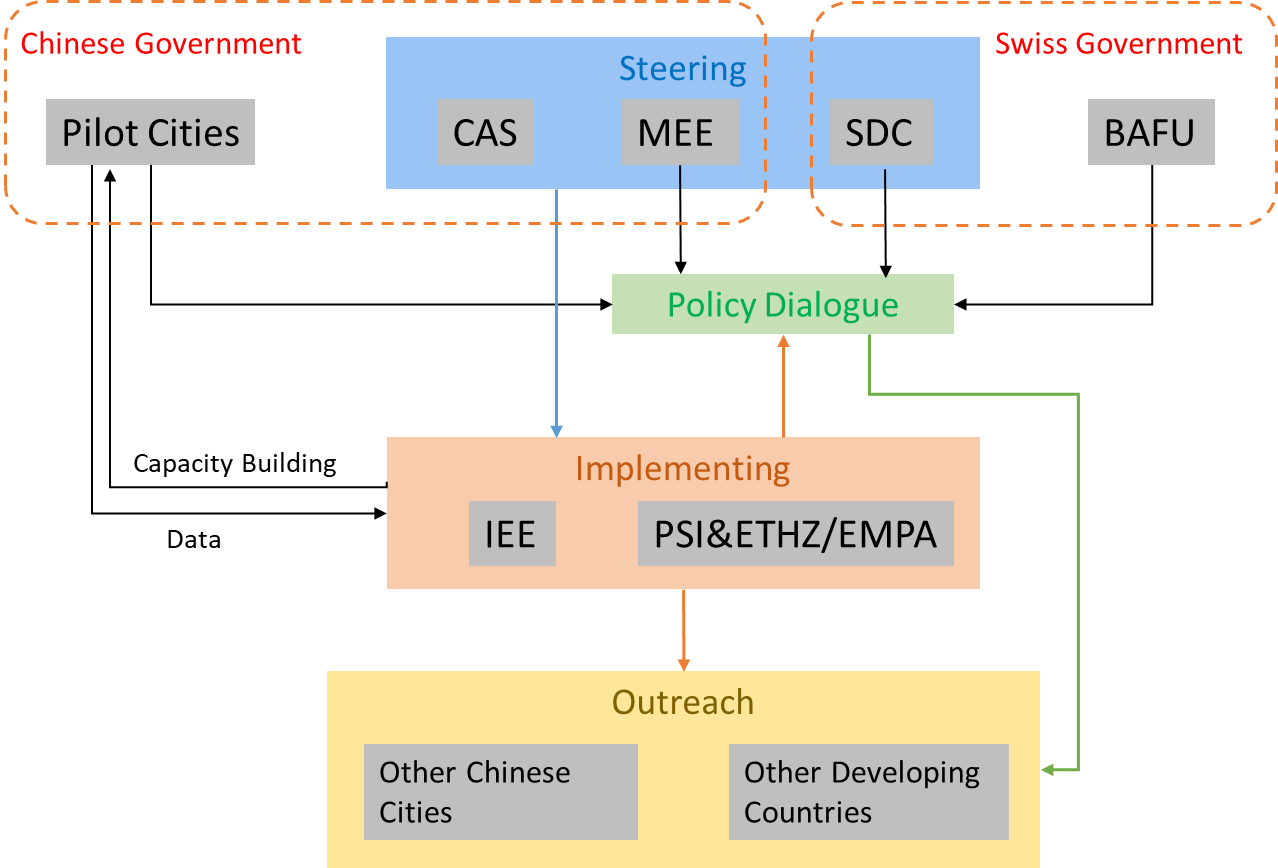Fighting air pollution is a top priprity in the Chinese Government.Air pollution is a serious health risk;air pollution also is a major driver of climate change,mostly affecting the poorest segments of societies.Effective air quality control requires pollution reduction pollicies and emission reduction measures targeting cities and metropolitan regions.The present sino-swiss project applies and further develops scientific methodologies to assess,and control pollution for effective policy decisions and measures.

Project overview
Reduction of air pollution remains of one the highest priority for the government of China.Further improvements in Chinese air quality require information-based decision-making and optimization of mitigation strategies.The project supports these objectives through the application of advanced source apportionment of PM2.5 by rapid analysis of on-line measurement data in 6 pilot cities(Beijing,Shijiazhuang,Langfang,Xi'an,Wuhan,and Chongqing)and assessment of current emission inventories.
The project includes short-term campaigns in a subset of pilot cities.These short-term campaigns utilize state-of-the-art scientific instrumentation beyond that required for the long-term source apportionment analysis to obtain the source-related data needed to initialize,calibrate and perform the source apportionment in the six cities using the monitoring instruments.These long-term data is per se a novelty in China at this moment.In parallel to the on-line measurements,off-line samples will be taken to derive classic and more recent state-of-the-art markers for different sources which can be used to validate the source apportionment at the six sites.Finally,interaction free models shall be developed to derive the PM2.5 sources quickly after measurements for the six cities individually and ideally for all stations together as a generalized model that may be used for the same and additional locations in the future.The data shall be used to understand major gaps in current emission inventories using inverse modelling.Altogether the results shall be used to influence policies regarding air pollution reductions in China.
Objectives
(SOURCE APPORTIONMENT) The Capacity of Chinese cities to do accurate air pollutant source apportionment is improved.
Output 1 High-quality data of air pollutants is generated using the new combination of equipment in the six pilot cities.
Output 2 Accurate and timely air pollutants source apportionment results are available for the six pilot cities.
Output 3 Methodologies of new source apportionment model are shared beyond the six pilot cities.
(EMISSION INVENTORY) Timely and reliable air pollutant emission inventory of Chinese cities becomes available.
Output 1 The existing air pollutant inventories in the six pilot cities are updated.
Output 2 Air quality modelling is used to adjust inventory data.
(POLICY INFLUENCE) The results of source apportionment and emission inventory are taken into account for policy making.
Output 1 Policy recommendations are delivered to local and national government through reports and discussed in meetings.
Output 2 Swiss experience of science-based policy making is shared with Chinese government.
(KNOWLEDGE SHARING) The knowledge and experience developed by the Project are effectively disseminated and used.
Output 1 Webpage, newsletter and publications are produced.
Output 2 Project results and experience are shared with other counties and in global events.
Output 3 Health impact study based on the source apportionment results is conducted.
Partners
The key implementing partners of the Project will be three scientific institutes, IEE, PSI and the Institute of Environmental Engineering of ETHZ, which already had cooperation befor. The Project will support them to deepen the cooperation in long-term and create policy influence. BAFU will be an important partner in this project to support the policy influencing process. Hence, a range of other relevant and competent Swiss and Chinese institutions will be linked to this project. Contributions of partners and specific roles are presented in the following.
On the Chinese side:
IEE is an affiliation of CAS, IEE established A Key Laboratory of Aerosol Chemistry and Physics (KLACP) in 2014 to investigate aerosols and their climatic and environmental effects in circumstances of frequent and severe smog episodes occurred in many Chinese cities. Scientists at KLACP apply field observation, lab analysis, mathematic modelling and a range of approaches to study the chemical and physical changes of aerosols and their environmental effects. To support the PM2.5 regulation, KLACP has launched simultaneous observation in 14 Chinese cities in 2003, and obtained comprehensive data on PM2.5 concentration, chemical composition and spatial distribution. These data were the first simultaneous, multi-city measurements of aerosol chemical composition in China, providing a baseline for a PM2.5 pollution map. Based on more than 10 years of continuous observation from its Xi’an observation, KLACP has developed the longest daily PM2.5 database in China, which is very valuable for environmental, health and climatic research.IEE is also the core institution in national task force of source apportionment for “2+26” cities, policies derived from this project would help both central and local government develop and implement pollution mitigation measures.
MEE, with its affiliation Chinese Research Academy of Environmental Science (CRAES), is the key partners for policy influencing. Training of the new apportionment methodology and technology developed by this project will be shared beyond the pilot cities, including in the “2+26” cities and cities of SDC funded low-carbon city project. MEP would play a role of upscaling.
On the Swiss side:
PSI is a research institute for natural and engineering sciences, conducting cutting-edge research in three main fields: matter and materials, energy and environment and human health. PSI will take the leading role in coordinating a consortium of PSI and ETHZ/EMPA.The Laboratory of Atmospheric Chemistry, established in January 2000, is under the Energy and Environment Research Division. The laboratory consists of three groups working in the fields of gas phase and aerosol chemistry, aerosol physics, and smog chamber studies. PSI is involved in national and international projects focusing on particulate matter in the atmospheric boundary layer. They deploy a variety of specialized, modern, off-the-shelf or self-developed instruments for field and laboratory experiments (smog chamber, mobile laboratory, ad-hoc field sites) as well as for off-line filter analyses. Field, off-line and laboratory data are interpreted with numerical and statistical models. In recent years, PSI has pioneered in several researches that are crucial to the success of the Project: (1) world-leading source apportionment algorithms; (2) novel instrumentation providing previously inaccessible chemical information for organic aerosols vital for source apportionment of aged aerosol; (3) methods for applying online instruments to off-line analysis of collected filter samples.
ETHZ and PSI have long cooperation in the field of atmospheric science. In the Project, ETHZ will be consulted, contributing to increasing the accuracy of source apportionment analysis. ETHZ will provide emission inventory data dynamically updated by chemical transmission model to support the development of new receptor model for source apportionment. ETHZ will also contribute to making use of the raw data generated in this project (both offline and online observations) to improve the numerical forecast quality, and reduce the uncertainties.
EMPA would be consulted in air pollutants measurement and the inverse air quality modelling.
Organizational Structure
